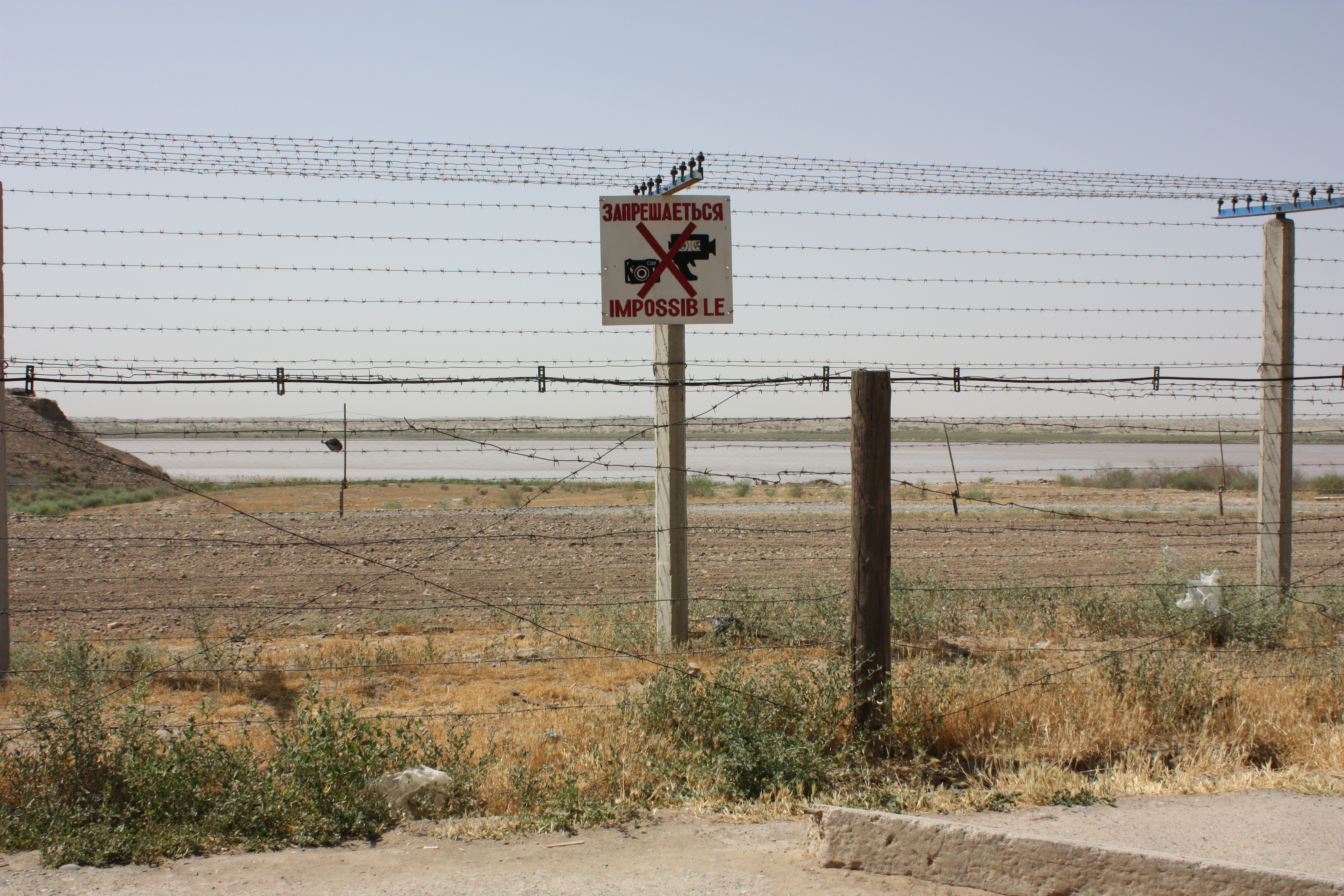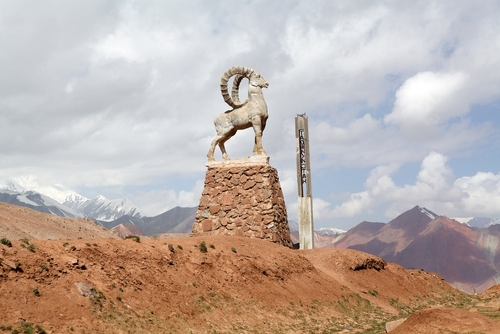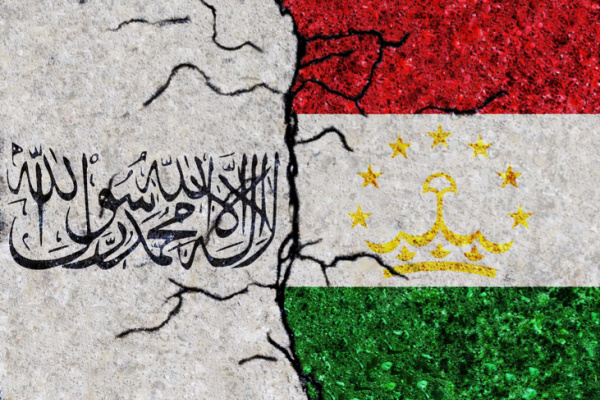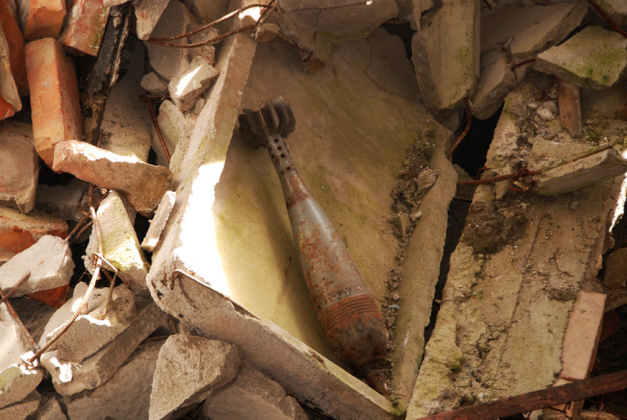The CIS Summit and Central Asia's Afghan Challenge
By Aleksandar Ivanović
On October 10, 2025, the CIS heads of state summit was held in Dushanbe, Tajikistan. The leaders established the “Commonwealth of Independent States Plus” (CIS+) format, further integrating external partners in CIS initiatives. Turkmenistan was chosen to chair next year’s summit in October. Multiple packages of documents were signed, targeting trade, crime, and most importantly, security. Security challenges from Afghanistan, including extremism and border conflicts, have continued since the Taliban takeover, and these recent agreements make up another component of Central Asia’s lengthy efforts to reduce the recurring concerns that can potentially spill over into their territories.
Credit: Wikimedia Commons
BACKGROUND: As Tajikistan’s President Emomali Rahmon hosts high-ranking representatives from Central Asia, the Caucasus, Russia, and Belarus in Dushanbe for this year’s CIS Heads of State Summit, their annual tradition marks another year of important security partnerships.
The leaders signed multiple packages of documents, including the decision “on the Program of cooperation of the member States of the Commonwealth of Independent States in the field of countering terrorism and extremism for 2026-2028, strengthening border security at external borders for 2026-2030,” and military cooperation until 2030.
Russian President Vladimir Putin affirmed Russia’s open support for the signed proposals, stating that “an important area of joint work among the CIS states is the fight against terrorism, extremism, corruption, and so on.” Russia has been a victim of terrorism in the past, most notably in March 2024 when a bomb detonated in a Moscow concert hall killed 144 and wounded more than 500. The attack was carried out by ISIS-recruited Tajiks from both sides of the Afghan border, demonstrating how Afghanistan-based extremism can strike major regional powers.
The summit occurs at a critical juncture where the regional balance of power undergoes an increasingly global shift. Russia and China have taken significant actions to cooperate with Afghanistan, where the now-Taliban run state poses a greater challenge to regional security. China has offered economic-based strategies, accelerating infrastructure investments like its copper mining project at Mes Aynak, which is possibly the world’s second-biggest copper deposit. Russia, taking a more political route, formally recognized the Taliban government in July 2025, becoming the first country to do so.
The recent moves from external powers have complicated Central Asia’s own efforts to manage threats relating to Afghanistan. However, its leaders were also eager to comment on how to address security while pursuing economic opportunities with the Taliban. In his remarks, Uzbekistan’s President Shavkat Mirziyoyev outlined his interest in developing economic partnerships in Afghanistan, mentioning “joint participation in the implementation of major investment and infrastructure,” and stating that “Uzbekistan is resolutely committed to ensuring long-term peace, stability, and sustainable development in Afghanistan.” Despite its relatively small border, Uzbekistan is in a constant battle with extremist activity and border conflicts coming from its unstable southern neighbor. As a result, Tashkent has approached the Taliban government with a more open-minded attitude compared to its Central Asian counterparts to support the Afghan economy and infrastructure, hoping to address poor economic indicators that instigate external threats including extremism.
IMPLICATIONS: The documents signed in Dushanbe mark another example of Central Asian resilience and solidarity in assuring regional security, and for dealing with Afghanistan in the future. Central Asian states have already grappled with these efforts since 2021 and have collectively reflected on Afghanistan on multiple occasions. In August in Tashkent, special representatives of Kazakhstan, Uzbekistan, Tajikistan, and Kyrgyzstan stressed the importance of fighting threats emanating in Afghanistan, highlighting extremism, terrorism, drug trafficking, and cross-border crime.
Extremism stemming from Afghanistan has most significantly been propagated by ISIS-K, the Islamic State’s branch in the historic Khorasan region. It mostly consists of non-Pashtun minority ethnic groups living in the northern region of Afghanistan, including Uzbeks and Tajiks. A portion of their fighters also include extremists or government dissidents in Central Asia, who go to Afghanistan and join their cause. ISIS-K seeks to radicalize and recruit young men from Uzbekistan and Tajikistan, and spread propaganda through media to appeal to extremists and those dissatisfied with their governments. Major campaigns include criticizing governments for poor economic conditions in their respective countries, and the Taliban, a majority-Pashtun group and adversary that has undermined the presence of ethnic minorities like Uzbeks and Tajiks in Northern Afghanistan. President Rahmon has publicly acknowledged the issue, and has deemed ISIS-K a “plague,” and that “hell awaits” any Tajik that joins ISIS.
In addition to its media strategy, the group also actively works against the Taliban’s effort to build partnerships and expand security efforts in Central Asia. A notable example was when Uzbekistan, which holds the most cooperative relationship with the Taliban, was attacked in its border region by ISIS-K missiles in 2022, a strike aiming to undermine the Taliban’s legitimacy and security assurances to Central Asian governments.
Collective efforts with Afghanistan to combat extremism have not been substantial. With an already strengthened regional presence of ISIS-K, the Taliban’s internal power dynamics further complicate security assurances to Central Asia. The tension between Taliban leader Hibatullah Akhundzada in the southern city of Kandahar and the more accessible and pragmatic Sirajuddin Haqqani in Kabul creates uncertainty about whether commitments to suppress extremist groups will be honored consistently across Afghan territory.
Central Asian states have mostly conducted autonomous campaigns to limit the spread of extremist groups and their potential influence. In February 2024, the National Security Committee of Kazakhstan neutralized multiple extremist groups and detained 23 individuals, including adherents of destructive religious movements, in 8 regions of Kazakhstan for promoting terrorism. Tajik forces similarly followed three months later, raiding villages in its Eastern region to arrest 30 people for connections to their terrorist group Jamaat Ansarullah, Tajik extremist allies of the Taliban.
Tajikistan, the most vocal state, was the only Central Asian government to call out the Taliban and categorize it as purely a threat. Dushanbe refused to send a diplomatic mission after the Taliban seized political power and has demonstrated security concerns through conducting multiple military drills along the Afghan border, some in cooperation with the Uzbek military. In a June 2024 session of the CSTO Parliament Assembly in Almaty, Rustom Emomali, son of the Tajik president, declared Afghanistan a “breeding ground of terrorism.” The Taliban has repeatedly assured Central Asian governments that it will not allow its territory to serve as a platform for extremist groups to strike its neighbors. However, this assurance has lately been viewed more as a desperate plea for legitimacy rather than a valid promise, as hostile attacks by ISIS-K and the presence of other terrorist groups like Jamaat Ansarullah continue.
Kazakhstan and Uzbekistan have pursued a dual-track approach, recognizing that economic engagement may prove more effective than isolation. Both countries expect to conduct US$ 3 billion worth of trade with Taliban-ruled Afghanistan in 2025, viewing the country as their most important underdeveloped economic opportunity. They also seek to revitalize the historic Great India Road trade corridor which runs through Afghanistan, and it remains their highest priority for reducing dependence on northern routes through Russia. However, this strategy requires delicate balancing – economic ties that could reduce the sources of extremism must not legitimize a regime that harbors terrorist groups.
CONCLUSIONS: The past four years have demonstrated that Central Asian states face a complex trilemma: they must counter immediate security threats from Afghanistan, pursue long-term economic integration through Afghan territory, and navigate the competing interests of Russia and China – both now deeply engaging with Kabul.
The CIS summit’s security packages represent one pillar of this strategy, but they can only succeed through continued economic and diplomatic initiatives. What defines this unique current moment in Afghanistan is the erosion of Western engagement following the near-complete cessation of U.S. humanitarian assistance under the Trump administration. This vacuum has allowed Russia and China to position themselves as Afghanistan’s primary external partners, potentially foreclosing Central Asian hopes for a more balanced regional order. The next couple of years will test whether Central Asian solidarity, as demonstrated in Dushanbe, can effectively manage Afghan challenges without becoming dependent on their northern and eastern neighbors. How these dynamics unfold will indeed remain an essential conversation in Turkmenistan next year.
AUTHOR’S BIO: Aleksandar Ivanović is a researcher at the American Foreign Policy Council
Email:
This email address is being protected from spambots. You need JavaScript enabled to view it.
The EU Expands Its Ties With Tajikistan
By Emil Avdaliani
The EU’s deepening engagement with Tajikistan through the Enhanced Partnership and Cooperation Agreement (ECPA) aligns with Brussels’ broader economic and political outreach toward Central Asia. This strategy represents another phase in the Union’s increasingly active policy toward the region. The EU’s interest is driven by the Central Asia’s significance amid intensifying rivalry between the U.S. and China over control of supply chains critical for battery and electric vehicle production. A further factor strengthening EU–Central Asia relations is the regional states’ pursuit of multi-alignment. Wary of dependence on either Russia or China, the Central Asian governments seek partnerships with other major powers.

Credit: Wikimedia Commons
BACKGROUND: On July 18, the European Union and Tajikistan initialed the EPCA. This accord will replace the Partnership and Cooperation Agreement that has been in place since 2010, establishing a legal framework to advance reforms in Tajikistan. The EPCA corresponds closely with the EU’s strategic priorities in Central Asia, which call for a more reinvigorated approach to the strategically significant region. It also seeks to establish a basis for future relations, reflecting emerging economic and political conditions on the ground. Brussels and Dushanbe foresee cooperation in trade as well as in human rights, sustainable development, education, energy, and related areas.
Similarly, in July the two parties discussed the present state of cooperation and prospects for launching new joint projects in mechanical engineering, pharmaceuticals, textiles, and the food industry. Additional areas include the mining sector, with particular focus on the extraction and processing of critical raw materials. Officials from Tajikistan and the EU also considered Dushanbe’s potential participation in the EU Global Gateway initiative, designed to promote sustainable infrastructure and reinforce strategic linkages across Eurasia.
The EPCA builds upon already established cooperation across multiple sectors. For example, during the past five years, 500 Tajik students have studied in Europe through EU funding. The Union has financed projects in the healthcare sector and promotes digital transformation, including initiatives to expand digital access via satellite technology. The EU also contributes to the development and modernization of green energy production in Tajikistan. With European support, the Nurek, Sebzor, and Kayrakkum hydroelectric power station projects are under implementation, and Brussels is assisting the establishment of infrastructure to transmit electricity to South Asia through the CASA-1000 transmission line.
IMPLICATIONS: The EPCA was concluded after several years of bilateral negotiations, a timeframe regarded as relatively brief for agreements of this nature. The EU remains committed to serving as a partner in Tajikistan’s future development and seeks to broaden cooperation across a range of key sectors, from education to investments in critical infrastructure.
Tajikistan is particularly interested in attracting additional European investments and technologies for the construction of the Rogun hydroelectric power station and the modernization of the Nurek facility. Moreover, Dushanbe seeks to advance the implementation of a “green” economy, a topic addressed in discussions between President Emomali Rahmon and the President of the Council of the European Union, António Costa. Tajikistan has articulated ambitious plans to transform the country into a significant producer of green energy. In June, the leadership announced that by 2037 the country would generate electricity exclusively from renewable sources. Although perhaps unrealistic, these plans underscore Dushanbe’s rising aspirations.
The EU’s intensified engagement with Tajikistan corresponds to Brussels’ broader involvement in Central Asia. The summit convened by the EU with the five Central Asian states in Samarkand earlier this year represented a significant development in bilateral relations. Under the Global Gateway program, the EU announced a €12 billion investment package for Central Asian countries, including €3 billion for transport, €2.5 billion for critical minerals, and allocations for other sectors. Initiated in 2023, the EU–Central Asia summits have become central to bilateral ties, reflecting the region’s increasing significance for Brussels following the outbreak of the war in Ukraine.
The Russian invasion altered Eurasian connectivity, elevating the importance of Central Asian routes for both China and the EU. As part of the Middle Corridor, Central Asia is integrated into the EU’s Global Gateway initiative, designed to advance sustainable and interconnected infrastructure projects worldwide.
Tajikistan places particular value on connectivity opportunities arising from the EU’s engagement with Central Asia. Historically, the country has remained peripheral to major transit routes, with Kazakhstan and Uzbekistan assuming more central roles in linking China with global markets. Recently, however, Dushanbe has sought to capitalize on evolving Eurasian connectivity. Central Asia’s interaction with Afghanistan constitutes one potential avenue, but given Tajikistan’s cautious stance toward Afghanistan, the country is instead considering transit routes through Iran. Relations between Tehran and Dushanbe have improved in recent months, and Tajikistan is now actively pursuing the use of Iranian ports to gain access to India and the Gulf region.
Another transregional project pursued by Tajikistan is the Middle Corridor. In June, the Ministry of Economic Development and Trade announced that Dushanbe is actively cooperating with Uzbekistan, Turkmenistan, and other partners on agreements providing mutual discounts on rail transportation to facilitate trade flows. This activism is not confined to Tajikistan but reflects a broader trend observable in the conduct of other regional states, including even the most closed one, Turkmenistan.
For the EU, Tajikistan holds particular importance in light of Brussels’ growing focus on securing rare earth resources, which are vital for multiple industries where competition with China has intensified. Estimates suggest that the country possesses approximately 800 mineral deposits containing critical materials demanded in global technological production. In late 2024, Tajikistan announced the discovery of 15 new major deposits of rare earths. In July of this year, authorities further reported the identification of rare earth metals—niobium and tantalum—in the Rasht Valley. Tajikistan also possesses considerable hydropower potential, with its 13,000 glaciers accounting for 68 percent of Central Asia’s water resources.
CONCLUSIONS: The EU’s engagement with Central Asia, and Tajikistan in particular, demonstrates that the Union has adopted an increasingly geopolitical orientation toward the region. To compete effectively with China, Russia, the U.S., and other powers, Brussels must shift its focus from rhetorical emphasis on human rights and democracy promotion to more tangible measures, including investment in critical sectors of cooperation with Central Asian states. The EU is regarded as a reliable partner owing to its adherence to high environmental standards in investment and the long-term benefits derived from them. While Central Asian states anticipate deeper EU involvement, they also acknowledge the constraints of bilateral cooperation. Geographic remoteness and underdeveloped infrastructure remain significant obstacles. Furthermore, the EU allocates fewer financial resources to the region than Russia, and particularly China, while its bureaucracy, unlike China’s, is less adaptable to the needs of individual Central Asian states.
AUTHOR’S BIO: Emil Avdaliani is a research fellow at the Turan Research Center and a professor of international relations at the European University in Tbilisi, Georgia. His research focuses on the history of the Silk Roads and the interests of great powers in the Middle East and the Caucasus.
Kyrgyzstan and Tajikistan Resolve Final Border Dispute: A Historic but Fragile Peace
By Aigerim Turgunbaeva
On March 31, the presidents of Kyrgyzstan, Tajikistan, and Uzbekistan met in the Tajik city of Khujand to officially announce that all territorial disputes between their countries had been resolved. While future tensions cannot be ruled out, the region’s leaders now seem to believe that cooperation brings more benefits than conflict. For the Ferghana Valley, that shared outlook may be the strongest hope for lasting peace.

BACKGROUND: On March 13, Kyrgyz President Sadyr Japarov and Tajik President Emomali Rahmon signed a landmark treaty in Bishkek that definitively demarcates the entire 1,000-kilometer border between the two countries. The signing ended decades of intermittent clashes and unresolved territorial disputes rooted in the Soviet-era administrative boundaries. The agreement has been heralded as a major achievement in Central Asia’s regional integration efforts. Yet, the circumstances under which the deal was brokered—notably the lack of transparency, absence of public debate, and suppression of dissent—raise important questions about governance, public trust, and the future of cross-border relations.
The border between Kyrgyzstan and Tajikistan has long been a source of friction, shaped by convoluted Soviet-era administrative divisions that ignored ethnic, geographic, and cultural realities. When both countries gained independence in 1991, these internal lines hardened into contested international borders. Enclaves, disputed villages, and overlapping claims turned the border zone—particularly Kyrgyzstan’s Batken region—into a hotbed of tension.As scholars have noted, Soviet planners in the 1920s and 1930s deliberately drew borders in ways that divided ethnic groups in order to weaken potential nationalist movements, creating enduring fault lines.
Violent clashes over land, roads, and water access occurred frequently, notably in 2014, 2021, and 2022. The 2022 conflict, which left more than 100 people dead and forced over 100,000 Kyrgyz citizens to flee their homes, was the deadliest to date. Civilian infrastructure, including schools and homes, was destroyed, exacerbating mistrust and trauma. Yet this tragedy also marked a turning point, prompting both governments to prioritize renewed negotiations. Talks resumed in late 2022 and intensified through 2023 and 2024, culminating in the March 2025 agreement.
Years of border-related violence left deep scars on both Kyrgyz and Tajik communities. Skirmishes often began with disputes over water access or road usage but escalated quickly due to the presence of military and paramilitary forces in civilian areas. Armed confrontations resulted in civilian casualties, displacement, and destruction of property. The 2021 and 2022 conflicts in particular revealed how unresolved borders and competing nationalist narratives can turn small incidents into full-scale battles.
These events created a humanitarian crisis, especially on the Kyrgyz side. Thousands were displaced multiple times, while cross-border trade and local economies ground to a halt. Despite multiple ceasefires and ad hoc agreements, durable peace remained elusive until the new treaty.
IMPLICATIONS: The treaty signed in Bishkek demarcates the full 972-kilometer boundary and resolves all outstanding territorial claims. While the full text of the agreement remains undisclosed, officials have confirmed that contentious zones like the Tajik exclave of Vorukh and surrounding Kyrgyz villages like Dostuk were key components of the deal. Reports suggest that land swaps and security guarantees played central roles in achieving consensus. Ceremonial gestures — including the reopening of checkpoints and reciprocal presidential visits — symbolized a new era of cooperation. Both governments framed the agreement as a diplomatic triumph.
The March 2025 agreement is notable not just for what it achieves, but how it came to be. After over three decades of deadlock, the treaty represents the first time that both governments have fully delineated and mutually accepted their shared border. While the specifics of the final map have not been made public, officials claim that all 972 kilometers have been agreed upon, including previously disputed enclaves and water-sharing arrangements.
Unlike past negotiations, which were often derailed by public outrage and nationalist pressures, the latest talks were conducted in near-total secrecy. Kyrgyz President Japarov pursued a top-down approach, sidelining parliamentary debate and civil society in favor of closed-door diplomacy with Dushanbe. Critics argue that this strategy undermined democratic oversight. At least two prominent Kyrgyz activists — including opposition figure Ravshan Jeenbekov — were detained for criticizing the deal and calling for public input on territorial concessions.
Despite these concerns, the breakthrough likely stemmed from a convergence of political incentives. For Japarov, resolving the border conflict bolsters his image as a strong and pragmatic leader, particularly after facing domestic backlash over economic stagnation and governance issues. For Rahmon, the agreement strengthens Tajikistan’s security and eases pressure on a regime that has faced increasing scrutiny over human rights abuses and political repression.
Moreover, international pressure and quiet diplomacy may have played a role. Both Russia and China—key players in the region—have interests in stabilizing Central Asia’s volatile borderlands. Beijing in particular has invested heavily in cross-border infrastructure and trade routes under its Belt and Road Initiative, and further conflict between Kyrgyzstan and Tajikistan risked disrupting its regional ambitions. Despite both countries being CSTO members, Russia has kept its distance from the Kyrgyz-Tajik conflict. After invading Ukraine, Moscow lost interest in regional mediation. In October 2022, President Putin admitted Russia had “no intention of playing a mediating role,” offering only Soviet-era maps to aid negotiations. The Kremlin’s reluctance stems from earlier setbacks. A 2020 offer to mediate was met with a protest from Tajikistan, and Moscow’s failure to resolve the Armenia-Azerbaijan conflict made it cautious about another potential diplomatic failure in its perceived sphere of influence. Russia’s limited role has highlighted Uzbekistan’s emergence as a key regional mediator. Since 2018, President Mirziyoyev has led efforts to revive regional dialogue through Central Asian summits without outside powers like Russia or China. By 2025, Tashkent had helped reopen communication between Rahmon and Japarov — who until recently would not even shake hands. Uzbekistan’s active diplomacy was especially visible in early 2025, when the prime ministers of all three countries met to discuss border issues.
The Kyrgyz-Tajik border accord could set a precedent for resolving similar disputes in Central Asia. Yet, the long-term success of the Kyrgyz-Tajik deal remains uncertain. Much depends on how the treaty is implemented on the ground. Villagers affected by the redrawn boundaries have voiced concerns about losing access to farmland, water sources, and ancestral homes. Without robust compensation mechanisms or inclusive dialogue, displaced or dissatisfied communities may become flashpoints for renewed tensions.
In Kyrgyzstan, the lack of transparency has already fueled public distrust. Some residents of Batken—the region most impacted by the deal—have protested what they see as the government’s unilateral ceding of territory without adequate consultation. Japarov’s administration has struggled to control the narrative, resorting to arrests and censorship to stifle dissent. If local grievances are ignored, the agreement could backfire, becoming a source of instability rather than peace.
Regionally, the agreement may also shift the balance of power. Tajikistan, a historically more authoritarian state, appears to have secured favorable terms in some contested areas, raising concerns in Kyrgyzstan about unequal negotiations.
Nonetheless, the border agreement represents a significant, if imperfect, step forward. It removes a major source of armed conflict, potentially allowing both governments to redirect resources toward economic development and infrastructure. It also provides a foundation for cross-border cooperation on water management, trade, and regional security, if both sides are willing to engage beyond security optics.
Whether this peace holds will depend not only on maps and treaties, but on how governments engage their citizens in building a shared future across once-divisive lines.
AUTHOR’S BIO: Aigerim Turgunbaeva is a journalist and researcher focusing on Central Asia. Aigerim writes about press freedom, human rights, and politics in the former Soviet space, and delves into China’s interests in the region for publications like The Diplomat, The Guardian, Reuters, Eurasianet.
Tajikistan Faces Threat from Tajik Taliban
By Sudha Ramachandran
March 27, 2023
In July 2022, reports emerged of a “new” militant outfit in northern Afghanistan. A Taliban-affiliated group, the Tehrik-e-Taliban Tajikistan is reportedly in charge of the security of five districts in Afghanistan’s Badakhshan province. It has in its crosshairs the anti-Taliban resistance based in Tajikistan, the secular Tajik government and the Islamic State-Khorasan Province. So how “new” is the TTT? And what are the implications of its rising presence and profile in Afghanistan’s border districts for the region?

ISKP Attacks in Uzbekistan and Tajikistan
By Sudha Ramachandran
August 31, 2022
Since April this year, the Islamic State Khorasan Province (ISKP), the Afghan affiliate of the terrorist organization known as the Islamic State of Iraq and Syria (ISIS), has carried out rocket attacks in Uzbekistan and Tajikistan from its bases in northern Afghanistan. The attacks are significant. This is the first time that the jihadist group is targeting countries in Central Asia. They signal the ISKP’s expanding geographic presence inside Afghanistan as well as its growing ambitions in Afghanistan and Central Asia. Western countries that are concerned about terrorism emanating from Afghanistan should take note of the implications of the recent attacks.



